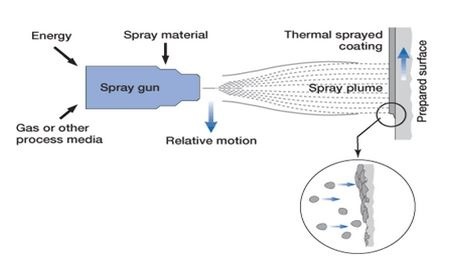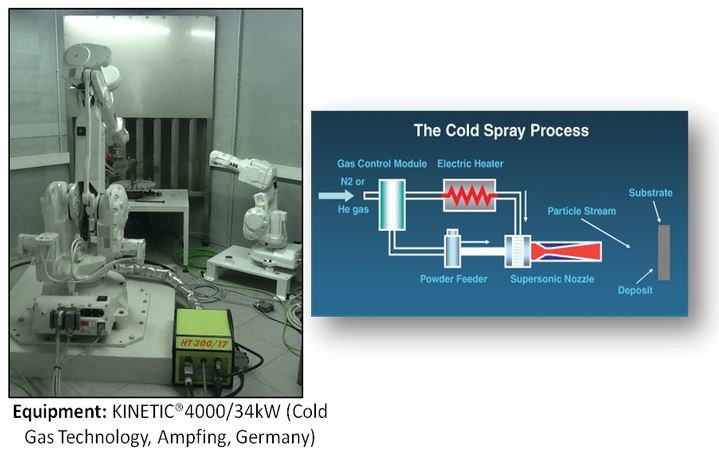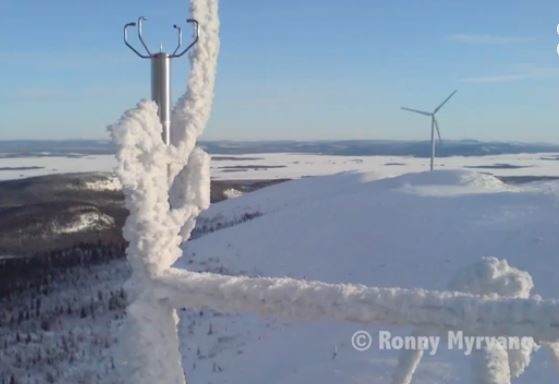Editor's Choice: Hydrobond Project - Application of superhydrophobic coatings onto large off-shore turbine blades
Offshore wind turbines face a battering from the elements. But newly-developed ‘hydrophobic’ coating techniques give ice and water droplets little chance of sticking to their blades, which boosts turbine performance and saves time and money for wind farm operators.
The work is being undertaken by the EU-funded Hydrobond project, coordinated by José María Guilemany from the Centre de Projecció Tèrmica (CPT) at the University of Barcelona. Together with a European consortium of companies and research centres, Hydrobond is developing new super-hydrophobic coatings and improving how they are applied.
The main objective of HYDROBOND is the development of a highly innovative process for application of superhydrophobic coatings onto large off-shore turbine blades that will contribute to minimize the power losses and mechanical failures. Novel thermal spray technologies will be the way to achieve the nano-structured coatings with tailored anti-icing properties and enhanced bond strength, in a cost effective manner for very large, composite material surface.

Today, industrial coatings are thermo-sprayed onto many industrial components. Energy from a high-temperature blasting process propels and semi-melts tiny ‘nano-sized’ powder particles towards a substrate or surface area, which once they harden or solidify, form a coating.
Coatings thermo-sprayed 30 years ago can still function well even today. However, melting followed by solidification can cause problems. As the coating solidifies, internal tensile stresses – how much tension a material can stand before it breaks – develop, reducing performance, because substances usually have less volume in solid form than in liquid form. Considerable post-coating work is needed to minimise the effect of tensile stresses, as well as problems such as oxidisation and other damage to materials.
Hydrobond has made advances in coatings for wind turbine blades using an alternative cold gas spray process. This technology does not melt the particle – they remain in a solid state throughout application.
When the particles hit the substrate they are compressed and deformed (in a good way). The coating is created by thousands of compressed particles embedded in the substrate and pushing against each other. Contrary to unwanted tension, these ‘compressive stresses’ actually strengthen the coating. And the need for much of the post-coating repair work is eliminated or significantly reduced.
Hydrobond’s researchers have made considerable progress in controlling and optimising cold gas spray techniques. Particles are fired at the substrate at high speeds – two to three times the speed of sound – to achieve the necessary plasticity which enables deformation. If the velocity of the particles is too high, they simply bounce off the substrate rather than bonding to it.
The team has also made important progress in the composition of the powders. In the past, only metallic substrates were used for cold gas spraying. The Hydrobond team has succeeded in spraying ceramic materials (among others) onto a whole range of substrates – metallic and non-metallic.
The new coatings will benefit the offshore wind industry. “We estimate it could be possible to reduce the costs of maintenance by 25% and to increase the lifespan of a wind turbine blade by 20-30%,” says Guilemany. “It is impossible to predict the life of a blade, but we estimate the new coatings will increase blade life by at least five years more than a conventional blade.”
The cost of post-coating repair is eliminated and the new coatings will be lighter. Blade repair is much easier, he adds. Cold gas spraying can be undertaken with a handheld device – and there are also environmental benefits. Cold gas spraying uses nitrogen, eliminating many of the CO2 emissions from traditional thermo-spraying.
The first demonstrators are being started, says Guilemany and patents are being secured. “We are very optimistic that in three years our new technologies will be available on the market.”
In summary, the pursued scientific-technological objectives and impacts derived from HYDROBOND project are:
- based on the properties of the new coatings, that will act as a passive anti-icing method, allow the design and construction of lighter larger wind turbines, avoiding the needs of heavier active anti-icing methods.
- due to the anti-icing properties, new coatings will allow the minimization of the ice accretion and will increase the reliability and operational life of components by reducing the mechanical failures. As already stated in this proposal, ice accretion will increase the load on the blades and on the tower structure, causing high amplitude vibrations and/or resonance as well as mass imbalance between blades, affecting specially the gearboxes whose lifetime is considerably reduced.
- New anti-icing coatings will improve the cost/efficiency ratio of the blades, because ice accretion changes the shape and roughness of the blade airfoil significantly reducing aerodynamic properties of the blade resulting in power losses.
- due to the enhanced bond strengh and the ability to keep the anti-icing properties even when wear phenomena happens, will contribute on reducing the maintenance needs. The new developed process, being a portable one, will also contribute to reduce the maintenance cost of off-shore wind turbines allowing in situ repair.
To receive more information on this article, our Newsletter or find out more about what w3.windfair.net has to offer, please, do not hesitate to contact Trevor Sievert at ts@windfair.net.
Please don't forget to follow us on Twitter: w3.windfair.net on Twitter
w3.windfair.net is the largest international B2B internet platform in wind energy – ultimately designed for connecting wind energy enthusiasts and companies across the globe.
- Source:
- EU Commission / Horizon 2020 - EU Framework Programme for Research and Innovation
- Author:
- Edited by Trevor Sievert, Online Editorial Journalist / by EU Commission Staff
- Email:
- ts@windfair.net
- Link:
- w3.windfair.net/...



